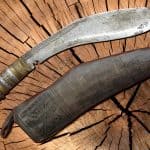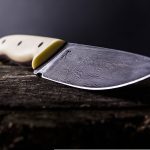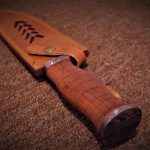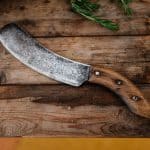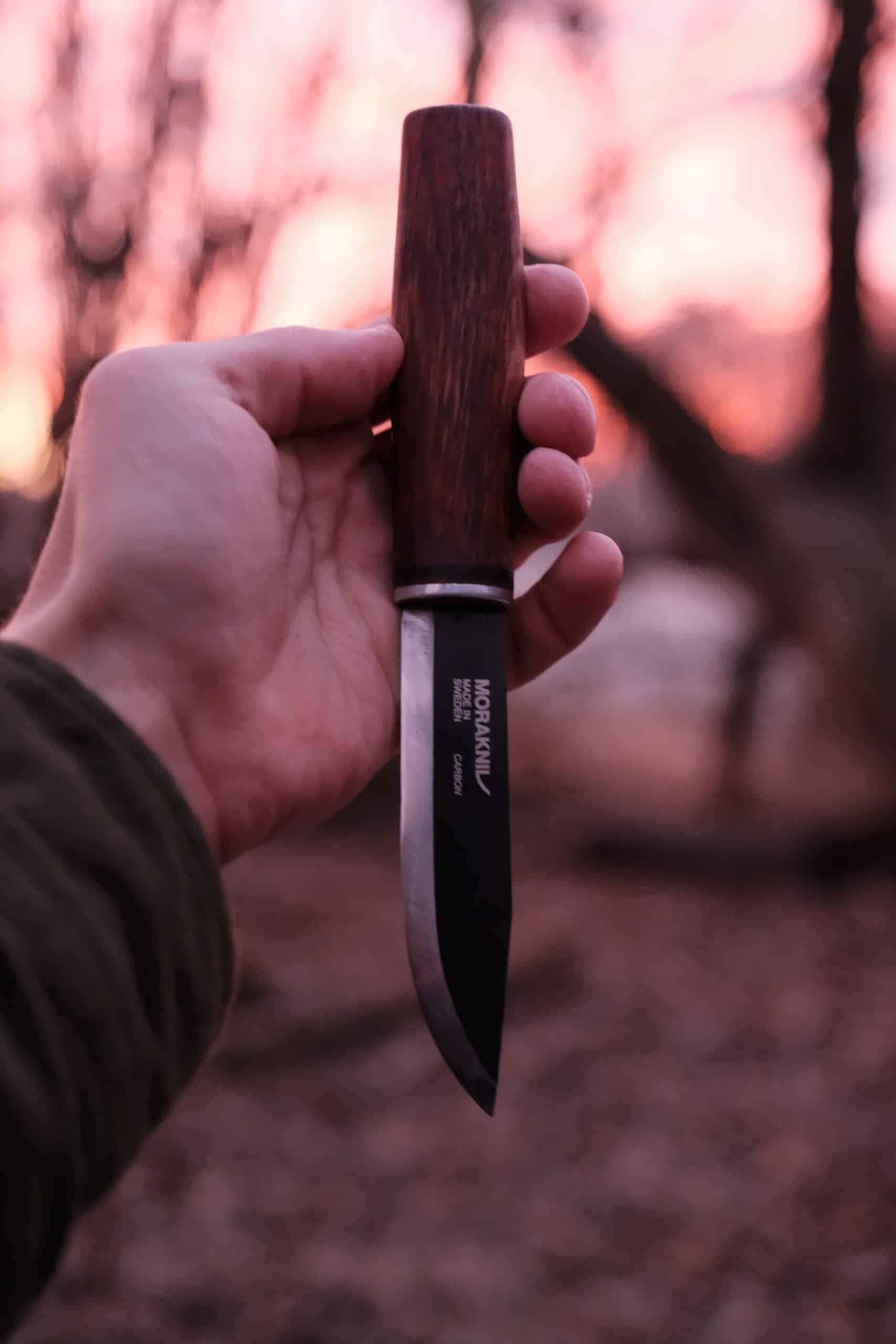
Introduction
Sharpening knives with a file is an age-old process consisting of grinding away metal from the existing blade in order to create a new edge. This method has been around for centuries and is still used today for a variety of cuts and produces very sharp edges. However, it does require patience and practice to do it well. When done properly, it can make the blade look almost like new again and significantly extend its lifespan. Here we will take you through the steps of sharpening a knife with a file, discuss its history and explain what materials should be used in this process.
Benefits of File Sharpening
Financial Pros:
-Using a file to sharpen a knife is much more affordable than purchasing an expensive set of sharpening stones, or having the blade professionally sharpened.
-Having the knowledge and skill to sharpen your own blades cuts down on replacement costs for dulled knives that can no longer be sharpened effectively.
Personal Cons:
-Sharpening a knife using a file requires patience and precision, and because it works best with flat blades, there’s the possibility of damaging or warping the blade if you aren’t careful. You must also take special care when handling the file itself; its teeth are very sharp and can easily cause injury if mishandled.
-You may need to re-sharpen more often as compared to other options, depending on how often you use your knives and how well you take care of them.
Anatomy of a Knife Blade
Sharpening a knife blade with a file is an important part of caring for any knife. Depending on the type and shape of your knife, you will need to choose an appropriate file. It is important to understand the different materials that compose a typical knife blade and how to sharpen them properly.
The most common type of knife blades are stainless steel or carbon steel, both composed primarily of iron. Stainless steel blades are more rust-resistant than carbon steel blades, making them ideal for kitchen knives or outdoor use when exposed to moisture because they don’t corrode easily. Carbon steel knives tend to dull faster than their counterparts but can usually be sharpened back to their original form with simple saw-toothed files like those used in carpentry and woodworking shops.
Once you have obtained an appropriate file, it is important to make sure all tools (such as angle guides, clamps) and supplies (polishing compound, lubricant) are organized beforehand so that the process can be expedited. Begin by setting the angle of your file at around 20-30 degrees behind the cutting edge. Then draw the file up towards you while evenly applying pressure across the full length of your blade. Make sure not to apply too much pressure on one side; over filing can ruin your blade’s delicate edge. When you reach the end of one stroke lightly follow up with another stroke in order to ensure smoothness and evenness along the edges.
When finished sharpening your blade, feel free to finish off with some polishing compound and lubricant if desired! Remember: proper maintenance practices should always be applied when caring for any tool!
Important Knife Sharpening Equipment
Sharpening a knife requires certain tools, such as a sharpening stone and/or a file. A sharpening stone typically comes with two sides of varying abrasiveness, which are used to sharpen the edges of the blade in an even stroke. For sharper knives, a higher grit is necessary for polishing the blade’s surface. Alternatives include steel rods and diamond-coated files. Steel rods increase wear resistance on knives but lack precision when honing edges. Diamond-coated files are more textured compared to stones and may leave uneven surfaces on the blade’s edge. Depending on the purpose, materials such as leather belts can also be used to put a sharper edge on knives while preserving their longevity. Other tools that may also be used include miscellaneous cloths and whetstones as well as oil for lubrication.
Sharpening Techniques
1. Check the blade: Inspect both sides of the blade for any deformation or damage. Avoid sharpening if your knife has chips, pits, dents, or other signs of damage that might affect its performance.
2. Prepare your file: Depending on the type of steel used in the blade and how blunt it is, you may need to use a coarse-grit file first, followed by a finer one. Experiment with different grit sizes to find a medium that yields the results you want.
3. Choose the right angle: Generally speaking, most kitchen utensils require an angle between 15–20 degrees per side (30–40 degrees total). To ensure accuracy, make sure to hold your file firmly on the edge to keep it perfectly perpendicular to the blade throughout sharpening.
4. Begin filing: Position the file so that it’s facing away from you, at the heel of the blade nearest to you. At about 45° angle to one side, begin pulling it towards you along the flat side of the knife until it reaches slightly beyond midway up its length (from heel-to-tip). Repeat on other side and then turn knife over and repeat on first side again. Make sure to keep both sides even as much as possible.
5. Stroke consistency: Continue going back forth pulling outwards each time while maintaining a consistent pressure and stroke length throughout process until desired sharpness is achieved. Repeat steps 3-5 as many times as necessary until desired level of sharpness is reached (this could take up to 30 minutes depending on blurriness). Be careful not to sharpen too much or else risk blunting instead!
6. Test for sharpness: To test for sharpness, press against finger with very light pressure before slicing through paper or whatever material you wish; repeat step 5 as needed until satisfaction is met!
Common Questions about Sharpening a Knife with a File
Q: What type of file should I use to sharpen my knife?
A: Different knives require different types of files. For example, wood-cutting or carving knives are typically sharpened with a flat file of medium-coarseness while knives used for kitchen tasks usually require a round file with a finer-grade grit.
Q: How often should I sharpen my knife using a file?
A: It depends on how often you use your knife but generally speaking, most knives should be sharpened at least once every couple of months. If used frequently, however, it may need to be sharpened more regularly.
Q: What is the best way to sharpen a knife with a file?
A: To get the best results when sharpening your knife with a file, make sure that you follow these simple steps: (1) Clean the blade thoroughly; (2) Secure the blade in place; (3) Work slowly and carefully; (4) Start from the base near the handle and work your way across both sides of the blade in smooth strokes; (5) Maintain consistent pressure on each side; and lastly, (6) Follow up with honing by running the blade along an oiled sharpening stone.
Q: Why does my knife still seem dull even after sharpening?
A: This can be caused by either improper technique or an overly dulled edge. Be sure to check that you have been applying consistent pressure when filing each side of your knife’s edge and that you have taken time to properly follow up with honing so as to create a new edge on the blade.
Conclusion
Sharpening a knife with a file is an effective way to maintain the sharp edge of your knife and prolong its life. You should take care while using the file by keeping pressure on the beveled side of the blade, angling it in one direction — away from you. Then move along the entire length of your blade, filing against the grain in multiple passes until you have achieved desired results. Start with a coarse-grit file that’s meant for knives before moving up to a finer one. For additional safety, wear protective gloves or goggles while sharpening your knife with a file. With proper technique and practice, using a file to sharpen your knife can help keep it performing well and safely for years to come.








